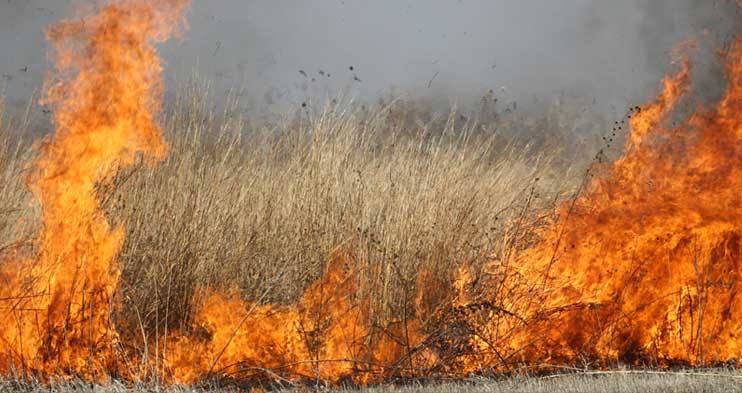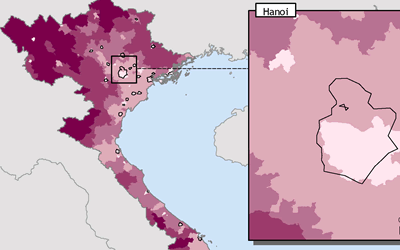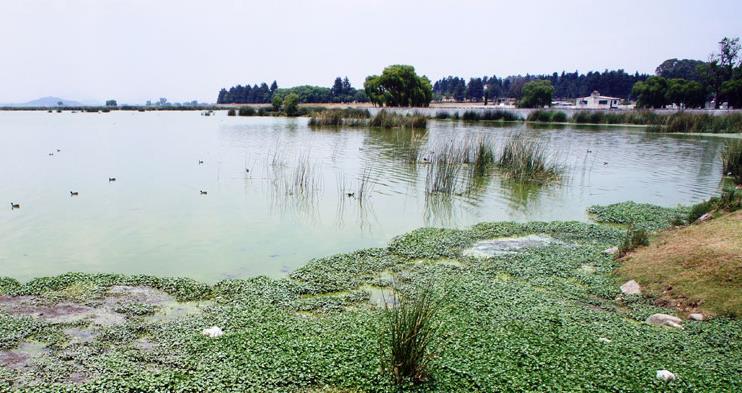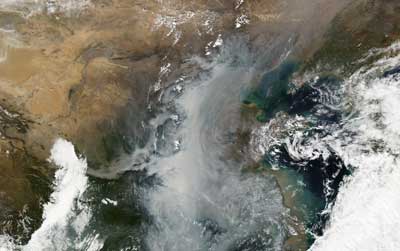
Sensing Our Planet: NASA Earth Science Research Features 2008 features an article on how SEDAC data was used for the 2008 Environmental Performance Index and other environmental assessments; CIESIN’s Marc Levy is interviewed.

A complex spatial relationship between population density and fire exists across the globe. This study looked at this relationship by comparing population density data from SEDAC’s Gridded Population of the World to burned area maps based largely on NASA MODIS satellite observations. In general it finds that in regions where climate or vegetation create conditions where fire is likely, people tend to suppress the fire, whereas in less fire-prone regions people tend to let the fire spread. In most regions of the world, increased population density initially leads to an increase in burned area but that relationship reverses at higher levels of population density.

A typically higher standard of living in urban areas compared to rural ones does not rule out striking disparities within cities. SEDAC data from its Global Poverty Mapping Project is used as the basis for this map. Map 1.2, illustration for Chapter 1--Density, The World Development Report Online 2009.

Using data from the NASA Gravity Recovery and Climate Experiment (GRACE) satellite instrument and the Advanced Land Observing Satellite Phased Array type L-Band Synthetic Aperture Radar (ALOS PALSAR) to study land subsidence, and SEDAC’s Gridded Population of the World (GPW), v3 to examine the distribution of people, investigators assessed the loss of groundwater storage in one of Mexico's most important watersheds.

Satellite data offer a particularly valuable perspective on PM2—small particles deriving mostly from burning fossil fuels and biomass, which can harm human health—because ground instruments may be unavailable or offer limited information, as is the case in China. With that in mind, researchers at Columbia University’s Earth Institute and Batelle Memorial Institute have developed maps based on satellite data that depict annual PM2.5 exposure in all of China’s provinces.